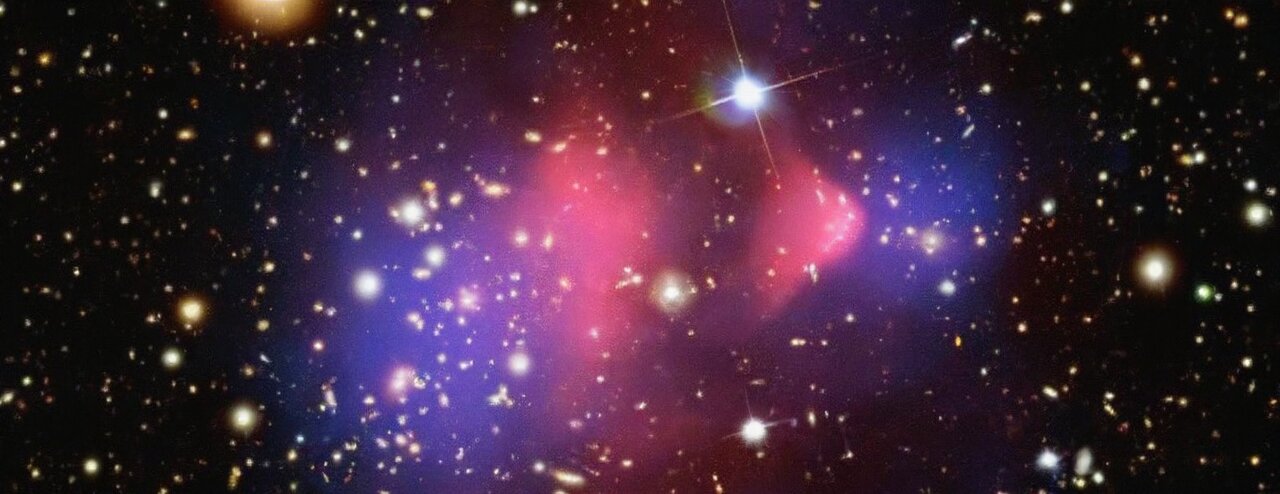A collision of clusters of galaxies reveals an intriguing separation of dark matter and normal matter. Dark matter has remained a mystery for almost a century, leaving scientists to employ innovative methods in their search for it. However, these sensitive detection experiments require thorough data analysis. With this in mind, the Super Cryogenic Dark Matter Search (SuperCDMS) collaboration has conducted a reanalysis of previously published experimental data. The study, published in Physical Review D, details the team’s exploration of dark matter through Bremsstrahlung radiation and the Migdal effect. In a groundbreaking approach, the team collaborated with geologists to consider how the Earth’s atmosphere and composition interact with dark matter particles to dissipate their energy. This analysis establishes one of the most stringent limits on dark matter detection thus far and paves the way for future research.
Noah Kurinksy, a staff scientist at SLAC and corresponding author, emphasizes the need to enhance detection sensitivities during the search for dark matter. Modeling these processes and comprehending measurement techniques are crucial for the dark matter community.
In an experiment like SuperCDMS, physicists aim to identify indications of dark matter colliding with atomic nuclei within a material such as silicon or germanium. Traditionally, it was assumed that these collisions were elastic, with the energy lost by the dark matter particle being transferred to the nucleus. However, recent studies have proposed the possibility of inelastic collisions. These collisions involve the transfer of energy to detectable entities like photons or electrons, potentially enabling more sensitive detection capabilities. The SuperCDMS experiment is among the most sensitive dark matter detectors of its kind. Thus, the team sought to determine the probability of observing this particular type of signal in the data.
The team focused on two potential avenues for inelastic collisions: Bremsstrahlung radiation and the Migdal effect. Bremsstrahlung radiation occurs when a charged particle decelerates, and in a dark matter detector, it could happen when a dark matter particle collides with a nucleus, transferring some of its energy to a photon. The Migdal effect involves displacing a nucleus from the center of its electron cloud when a dark matter particle strikes it. The readjustment of the electron cloud then ejects detectable electrons.
Reanalyzing the data while considering inelastic processes did not yield evidence of dark matter. Nonetheless, these analyses expanded the experiment’s limits to lower masses. The previous data analysis had already ruled out dark matter particles with masses as low as that of a proton. However, when accounting for Bremsstrahlung radiation, they can now exclude even lower mass ranges. The inclusion of the hypothetical Migdal effect extends these limits further.
The researchers went beyond mere data application and aimed to innovate. They considered both the lower and upper limits of detection for dark matter interactions. Recent insights suggest that if dark matter interacts significantly, it could engage with Earth’s atmosphere and impede its journey to the detector. Consequently, the more intense the interaction is, the more energy the dark matter particle loses before reaching the detector. Calculating these limits involved modeling how Earth’s atmosphere and inner layers affect a dark matter particle traversing through the planet to the detector. Geologists provided valuable assistance in determining the exact composition of the surrounding soil and rock in the Soudan Mine in Minnesota. Armed with this information, the team established upper limits for dark matter interaction strength based on the particle’s trajectory.
After analyzing the SuperCDMS data with the new models incorporating the effects of Bremsstrahlung and the Migdal effect, along with the upper limits, the team found no evidence of dark matter interactions. Nevertheless, this analysis represents one of the most sensitive searches for ultralight dark matter and provides valuable insights from existing data. The researchers are dedicated to making the most of their experiment as they delve into the unknown, eagerly reaching out to the darkness.
Denial of responsibility! TechCodex is an automatic aggregator of the all world’s media. In each content, the hyperlink to the primary source is specified. All trademarks belong to their rightful owners, and all materials to their authors. For any complaint, please reach us at – [email protected]. We will take necessary action within 24 hours.

Jessica Irvine is a tech enthusiast specializing in gadgets. From smart home devices to cutting-edge electronics, Jessica explores the world of consumer tech, offering readers comprehensive reviews, hands-on experiences, and expert insights into the coolest and most innovative gadgets on the market.


